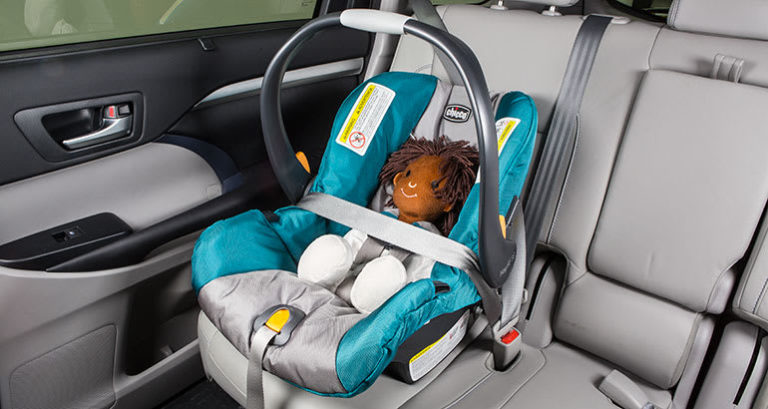
How to Choose a Carrier Car Restraint for a Baby
The journey to select an infant car seat carrier for a newborn will likely lead parents to that long aisle of car seats at the local Babies R Us. With numerous options, it can be difficult for parents to know exactly which seat is the right choice for their growing family. However, with a little bit of guidance, parents can purchase a child car seat restraint with confidence.
There Is No “Best” Child Restraint
The most important tidbit parents need to understand is that the best car safety seat is one that is installed correctly according to the manufacturer’s unique instructions and used properly every single time. All car seats currently being marketed in the United States have been reviewed by the National Highway Traffic and Safety Association (NHTSA) and meet guidelines for crash test performance.
“Better” Infant Safety Seats
Because motor vehicle accidents remain the number one cause of death for children age 14 and under in the United States, many parents are selective about which seat they choose. Car seats can differ greatly in their ease of ease of use, added safety features, and the cost. Parents should carefully consider the following points when selecting an infant car seat.
Higher Height and Weight Limits
Higher height and weight limits are perhaps one of the most important added safety features for which parents should look. It is well-established that babies should stay rear-facing as long as possible to substantially reduce the risk of death and other injuries (American Academy of Pediatrics). Though parents in the United States can turn a child forward-facing as early as 20 pounds and one year of age (note child must meet both requirements), many parents are following the AAP’s urgency to stay rear-facing for as long as the car seat allows.
The unfortunate thing is that some children outgrow the seat in height before they even reach the 20-pound weight limit. Some infant carrier car seats are now being marketed that accommodate babies up to 30 pounds and 32 inches.
5-Point Harness, Chest Clips, and Straps
Parents should look for a car seat that has a 5-point harness, two-piece chest clips, and wide twist-free straps. The 5-point harness is the safest type of harness available. Two-piece chest clips are less likely to twist, easier to use, and children are less likely to unbuckle themselves. Wide straps are less likely to become twisted. A twisted strap performs less efficiently and is more likely to cause skin burns in a crash. (Car-Safety)
Head Impact Protection and EPS Foam
Some seats have added head impact protection. The addition of EPS Foam recessed into the plastic at the head can offer added protection during side impacts, rear impacts, and rebounds in frontal crashes. Some newer models also have side impact protection measures. This may include wide, padded wings that cradle the head area.
Weight of the Carrier and Width of the Base
For parents who intend on using the carrier to transport their infant while not in the car, the weight of the carrier is something to consider. Some carriers weigh upwards of 10 pounds. Add an infant in the seat, and the carrier can be heavy to lug around. The width of the base may be important for families who have smaller vehicles or families with more than one installed car seats. Models generally range from 16.5 to 19 inches wide. (Fields, 2008)
Ease of Use
Parents need to be certain that they purchase a seat that can be installed properly and used correctly every single time. The National Highway Traffic and Safety Administration has developed a five-star rating system that evaluates instructions, labels, installation features, and ease of securing the child. For access to this “Ease-of-Use” brochure, call 1-888-327-4236 or visit their website.
Added safety features and ease of use are important aspects to consider when purchasing a car seat. With the knowledge of points to look for an infant car seat carriers, parents can make an informed choice of which car seat is best for their child, their vehicle, and their budget.